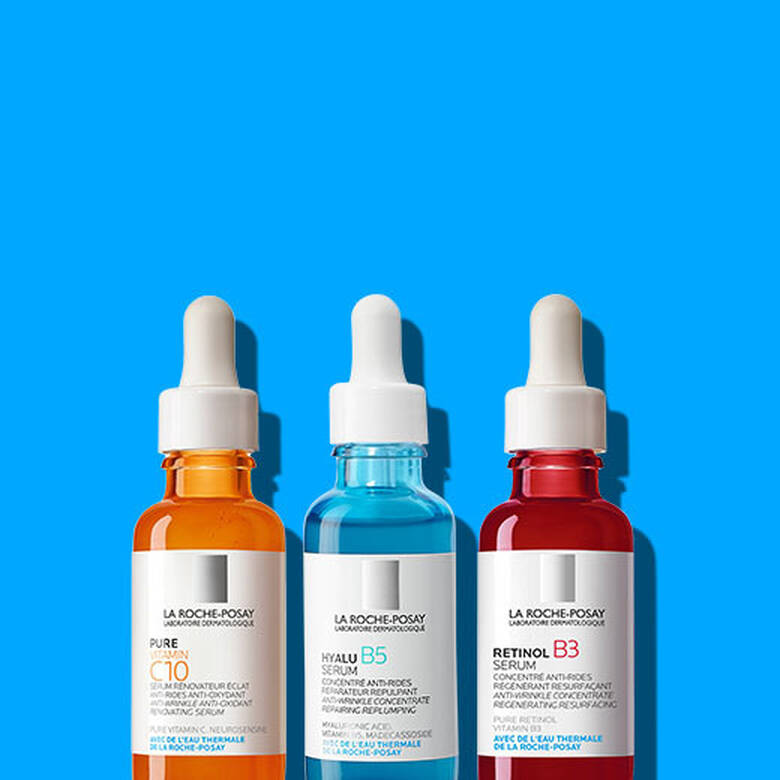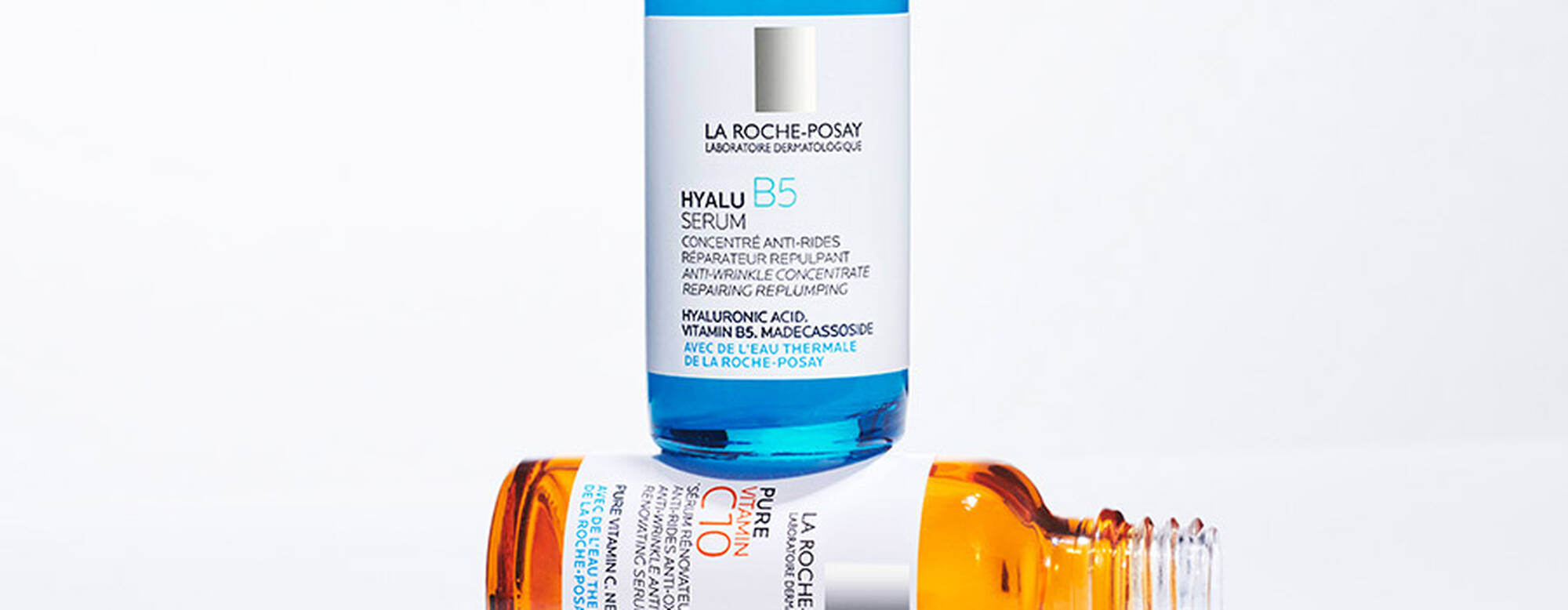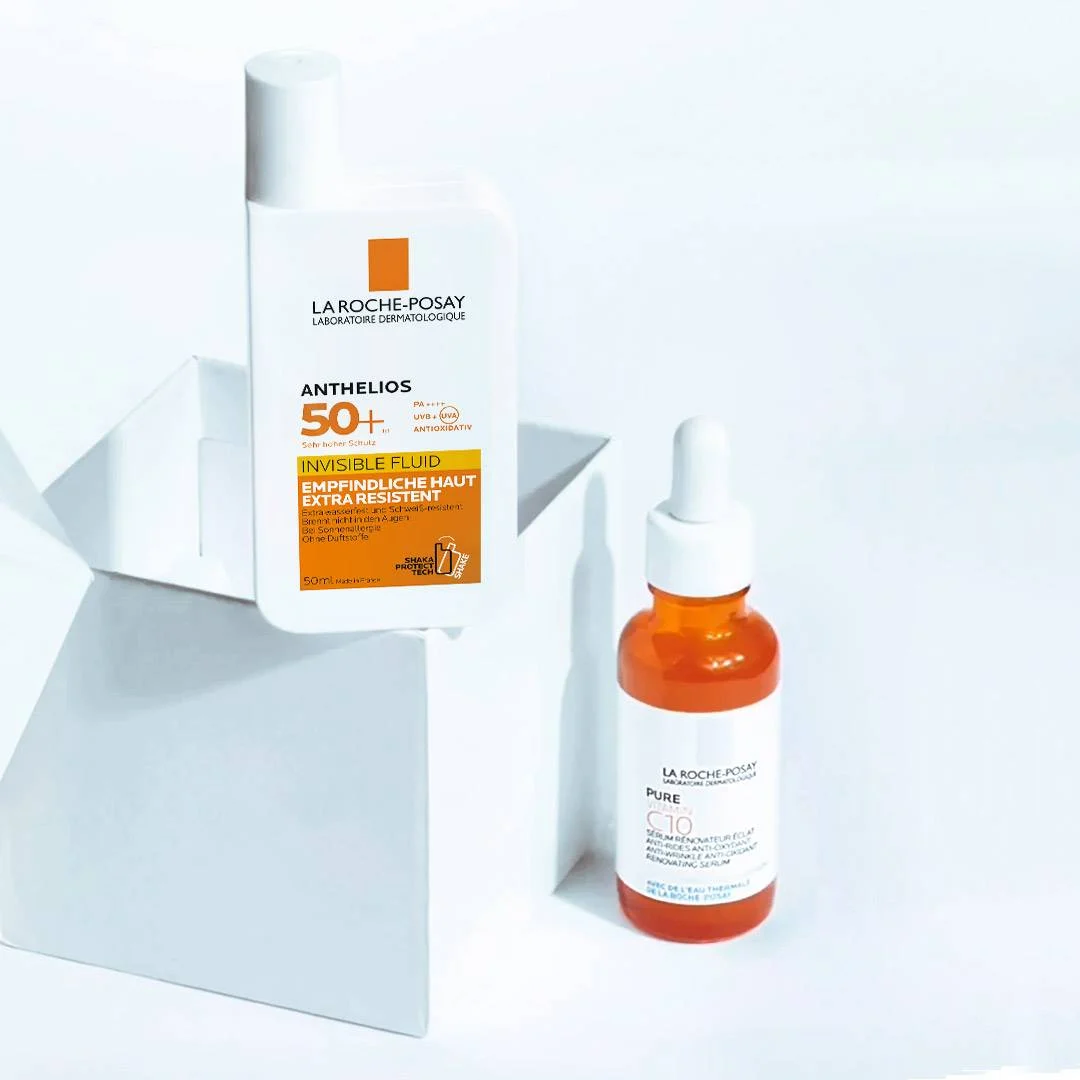Should I Use A Skin Brightener Serum In Am Or Pm
Want to get more from your skincare, without spending hours in the bathroom? The answer Is often every bit simple as adding a facial serum to your routine.
Lightweight and easily absorbed, serum penetrates the skin to deliver a concentrated dose of antioxidants, vitamins, and active ingredients. Targeting hyperpigmentation, wrinkles, dehydration, acne and more, they're the easy way to supercharge your skincare routine – equally long as you know how to apply them.
For everything from the correct way to layer serum and moisturiser to the ingredients to look out for, read on. Our AM to PM serum guide explains how to add a facial serum to your morning and night skincare routines for maximum results, minimum effort.
A quick tip: a perfect serum AM PM pairing starts with a soothing, hydrating or brightening serum in the morn, and a targeted serum at night. OurToleriane Ultra Dermallergo Hydrating Serum andRetinol B3 Anti-Ageing Serum are a perfect pair so if yous're unsure where to first, get-go with these serum friends!

1
Morn ROUTINE ADVICE
Do you utilise a Vitamin C serum morning or night? And can you employ retinol during the day?... Before you start applying serums willy-nilly, it's important to know which ingredients work best, when.
Many gentle serums, such as a hydrating Hyaluronic Acid Serum, barrier-boosting niacinamide serum or soothing, Anti-Redness Serum are effective applied morning and/or night. Notwithstanding, others are designed for use at a specific fourth dimension, such equally before sun exposure or sleep.
Skin brightening, hydrating and collagen boosting, a Vitamin C serum sits firmly in the 'best for AM use' category. This is because Vitamin C is rich in antioxidants, which assist to mitigate the costless radical damage – and subsequent signs of photograph-ageing – triggered past UV radiation.
If you're using a unmarried serum in the forenoon, it's therefore smart to prioritise an antioxidant serum, such as La Roche-Posay's Vitamin C 10 Brightening Serum. If layering a second serum (no more than 2 are recommend AM or PM), utilise the Vitamin C first.
La Roche-Posay Face Serum suitable for AM use: Vitamin C 10 Brightening Serum*, Hyalu B5 Hyaluronic Acrid Serum, Toleriane Ultra Dermallergo Hydrating Serum, Rosaliac Ar Intense Anti-Redness Serum
*Morning use recommended
2
NIGHT-TIME ROUTINE Communication
Some stimulating ingredients, on the other hand, are best applied in your nightly serum routine. These include retinol, AHAS such equally glycolic acid, and salicylic acid, which may increase sunday sensitivity (particularly in high concentrations).
Another reason a refining, re-texturisingRetinol Serum is ideal for night-time use is that the skin switches into renewal mode, and retinol supports its overnight processes. By helping to speed up skin cell regeneration, retinol can farther enhance repair.
At the aforementioned fourth dimension, skin also loses more moisture as you sleep. This means hyaluronic acrid is also ideal for night-fourth dimension use, especially if your skin is dry or dehydrated.
Want to layer your PM serums? Make sure you expect at the ingredients first. Some pairings, such as retinol and exfoliating acids, can overstimulate skin and cause dryness, peeling or sensitivity. While no combinations are categorically off-limits, awarding of some ingredients is often best spaced out. Confused? Ourguide to serum layering explains this in detail.
La Roche-Posay Face Serum suitable for PM apply: Effaclar Anti-Acne Salicylic Acid Serum*, Retinol B3 Anti-Ageing Serum*, Hyalu B5 Hyaluronic Acid Serum, Toleriane Ultra Dermallergo Hydrating Serum, Rosaliac Ar Intense Anti-Redness Serum
*For evening use merely – may increment sun sensitivity
3
SERUM TO SUNSCREEN…IN half-dozen EASY STEPS!
When layering serums and other skincare products, think thinnest to thickest*. This means applying serums to clean skin after your toner/mist (if using), and earlier moisturiser and sunscreen. If applying multiple serums, apply the thinnest first or, if they're the same consistency, use the most important serum to ensure it has a clear pathway.

Whether you should moisturise subsequently applying serum is a affair of preference and ingredients. If your serum contains no hydrating ingredients, yous'll likely benefit from using moisturiser. However, if it contains hydrators like glycerin and hyaluronic acrid, yous might be able to skip the moisturiser – especially if you're oily or acne-prone.
Regardless of pare blazon, the concluding, most of import step in any morning skin routine is applying a high-SPF broad-spectrum sunscreen! According to La Roche-Posay's Scientific Communications Managing director, Rachel McAdam, as sunscreen works past integrating and sitting inside the crevices of the pare to form a shield, it's best not to apply as well many layers underneath. Since nearly sunscreens comprise hydrating ingredients, this means that a divide moisturiser is often optional.
(*One exception to the thinnest to thickest dominion is eye cream. This should exist applied to clean skin, before serums.)
four
VITAMIN C SERUM & SUNSCREEN LOVE THE MORNING :-)
If you add together ane serum to your anti-ageing regime, consider a production containing Vitamin C. A powerhouse antioxidant that helps protect skin from gratis radical harm caused by environmental aggressors, Vitamin C has been proven to enhance the protective benefits of sunscreen.
Various studies have also shown Vitamin C'due south ability to prevent photodamage is further enhanced when combined with Vitamin E (tocopherol) – as in the Vitamin C 10 Brightening Serum.
So, for younger looking skin longer, try pairing a Vitamin C serum with a high-SPF broad-spectrum sunscreen, such every bit Anthelios Invisible Fluid Facial Sunscreen SPF 50+, every single day.

v
SERUM VS MOISTURISER – DO Y'all NEED BOTH?
Serums differ from moisturisers in a number of ways. Firstly, while they may contain hydrating ingredients, facial serums perform a wider range of functions than moisturisers, which essentially form a concrete barrier to lock in hydration.
With a thinner, lighter consistency, liquid or gel-like serums too penetrate the skin more deeply, thanks to smaller molecules. This, combined with their loftier concentration of one or more active ingredients, makes serums very constructive at targeting specific peel concerns.
While it's important to meet your peel's basic needs starting time by cleansing, moisturising and applying sunscreen, serums are likewise worth considering. And if you lot want to filibuster or opposite signs of ageing, many pare experts consider them crucial.
six
Can YOUR SERUM & MOISTURISER HAVE THE Aforementioned ACTIVE INGREDIENT?
What virtually layering a serum and a moisturiser with the same active ingredient – is this a 'practice', or a 'don't'? Well, information technology depends on the ingredient, the dosages, and whether the peel will actually gain any boosted do good, says McAdam.
For all ingredients, there is also a point at which the skin can't take up anymore, and no further benefit will be gained. Take Vitamin C. Show shows that exceeding a 20% concentration can lead to irritation, with no greater event1. Furthermore, too much topical Vitamin C can give fair peel an orange tint.
References:
one. Al-Niaimi F, Chiang NYZ. Topical Vitamin C and the Skin: Mechanisms of Action and Clinical Applications.J Clin Aesthet Dermatol. 2017;10(7):fourteen-17.
SHOP THE BESTSELLERS
Source: https://www.laroche-posay.com.au/blog/serum-how-to-add-to-your-am-and-pm-skincare-routine.html
Posted by: allisonmandiwe.blogspot.com

0 Response to "Should I Use A Skin Brightener Serum In Am Or Pm"
Post a Comment